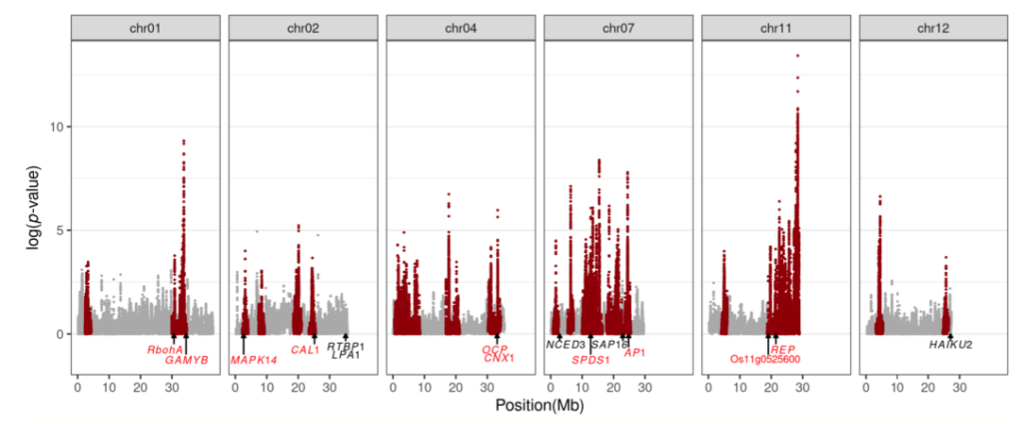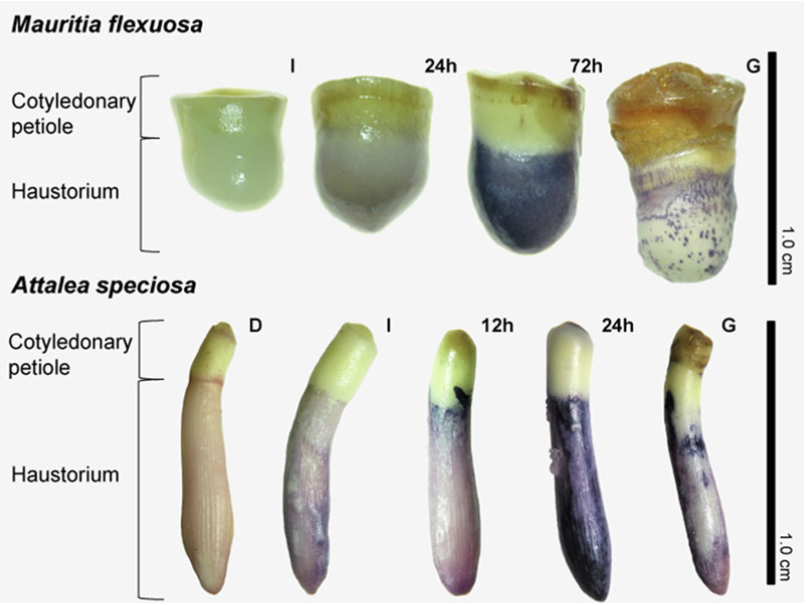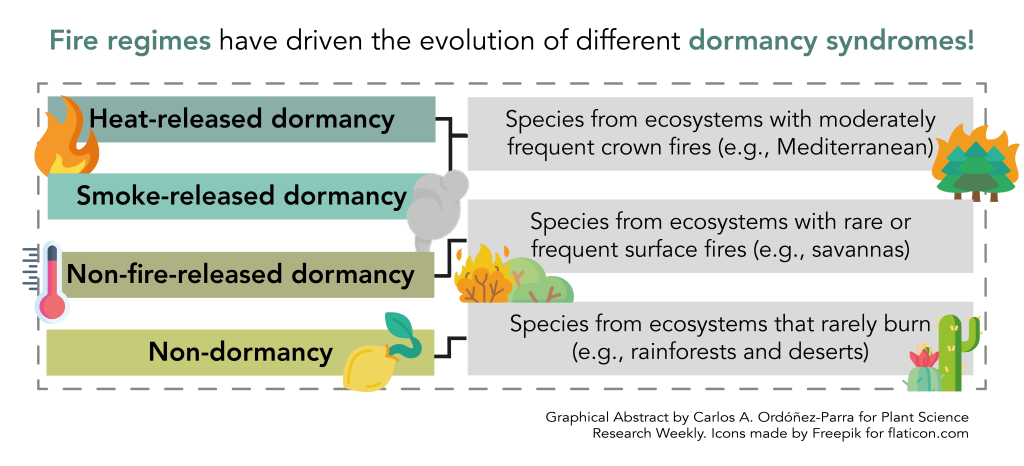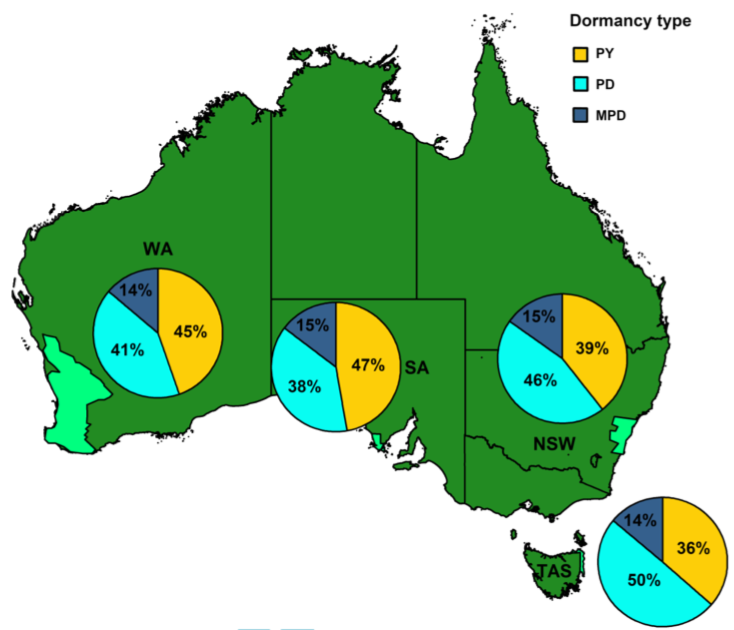
Hybrid-derived weedy rice maintains adaptive combinations of alleles associated with seed dormancy (Mol. Ecol.)
Plant Science Research WeeklyThe cross between genetically distant parents is an essential source of genetic variation. This process, known as hybridization, might result in the loss of adaptive gene combinations due to the introduction of non-adaptive alleles. However, Imaizumi and colleagues show this is not the case with weedy…

Single seeds exhibit transcriptional heterogeneity during secondary dormancy induction (Plant Physiol)
Plant Science Research WeeklySecondary dormancy (SD) of seeds is a natural strategy that allows survival of the plant in environments with unfavourable climatic conditions. However, in Arabidopsis, a variance of dormancy depth in between identical seeds can be explained by population-based threshold models. This single-seed variability…

Oxidant system and ABA drive germination in seeds of palm species with differences in desiccation tolerance ($) (Seed Sci Res)
Plant Science Research WeeklyPalms are a taxonomically and ecologically diverse group. This wide variety is also reflected in their seeds, with their species showing all combinations of dormancy and desiccation tolerance behaviors. Yet, comparative studies of their germination physiology are relatively scarce. In this paper, Santos…

Review: Fire-released seed dormancy - a global synthesis (Biol. Rev)
Plant Science Research WeeklyIn 1991, Jon E. Keely wrote the first review about the role of fire as a dormancy-breaking cue in California's Mediterranean ecosystems. In this review, almost 30 years after Keely's work, Pausas and Lamont provide us with an updated and worldwide vision of the subject. Four dormancy syndromes and their…

Seed dormancy in space and time: global distribution, paleo- and present climatic drivers and evolutionary adaptations ($) (New Phytol.)
Plant Science Research WeeklySeed dormancy is widely recognized as a key mechanism to ensure that germination takes place under the most suitable conditions. Such is its importance that multiple studies have described the morphological, physiological, and genetic mechanisms behind it, yet its global distribution and the past and…

Review: The great diversity in kinds of seed dormancy (Seed Sci. Res.) ($)
Plant Science Research WeeklyIn 1967, Marianna G. Nikolaeva presented the first detailed system to classify seed dormancy based on its causes and the conditions required to break it. Later in 2004, Jerry and Carol Baskin devised a hierarchical classification system based on Nikolaeva’s proposal, which has been widely used by seed…

A seed coat-specific β-ketoacyl-CoA synthase, KCS12, is critical for preserving seed physical dormancy ($) (Plant Physiol.)
Plant Science Research WeeklyPhysical dormancy is a dormancy class caused by a water-impermeable cell layer that prevents seed water uptake. Despite being present in several families, its molecular basis has seldom been addressed. Here, Chai and colleagues identify a β-ketoacyl-CoA synthase (KCS) –one of the enzymes that participate…

The seed germination spectrum of alpine plants ($) (New Phytol.)
Plant Science Research Weekly
Alpine ecosystems include all the environments found above the treeline, the maximum elevation where trees can grow. These environments are known for their low temperatures, unstable substrates, and short growing seasons. However, while germination studies in this ecosystem can be traced back to…

Distribution of seed dormancy classes across a fire-prone continent: effects of rainfall seasonality and temperature (Ann. Bot.)
Plant Science Research WeeklySeed dormancy controls germination so that it occurs under the most suitable conditions. Different dormancy classes achieve this by allowing germination in response to distinct environmental cues. In fire-prone ecosystems, species with physically dormant (PY) seeds benefit from fire since it breaks their…

